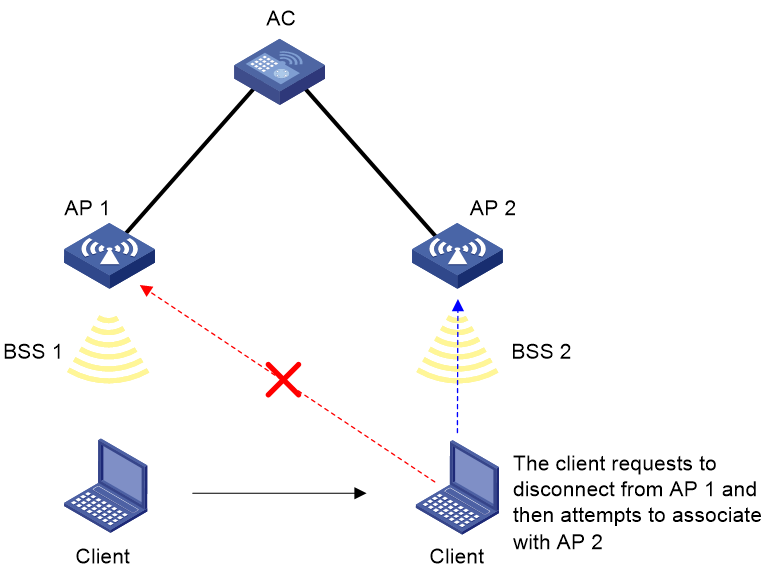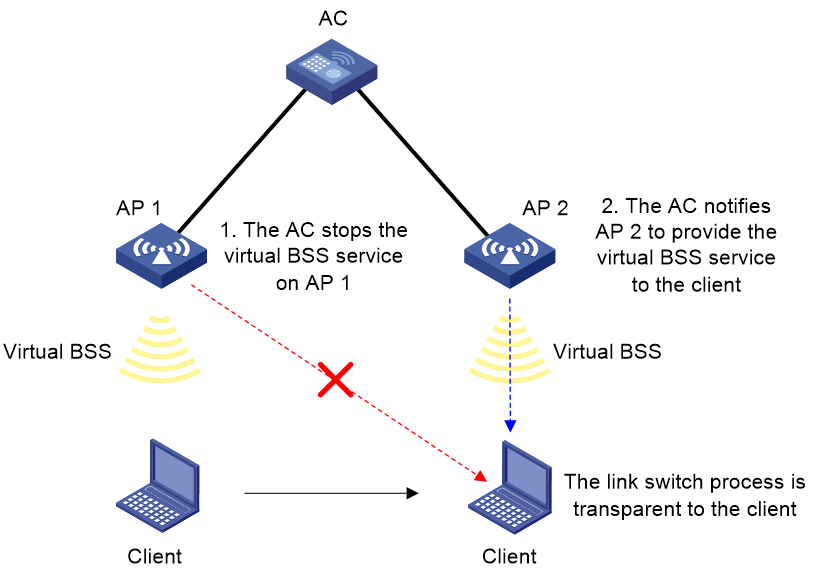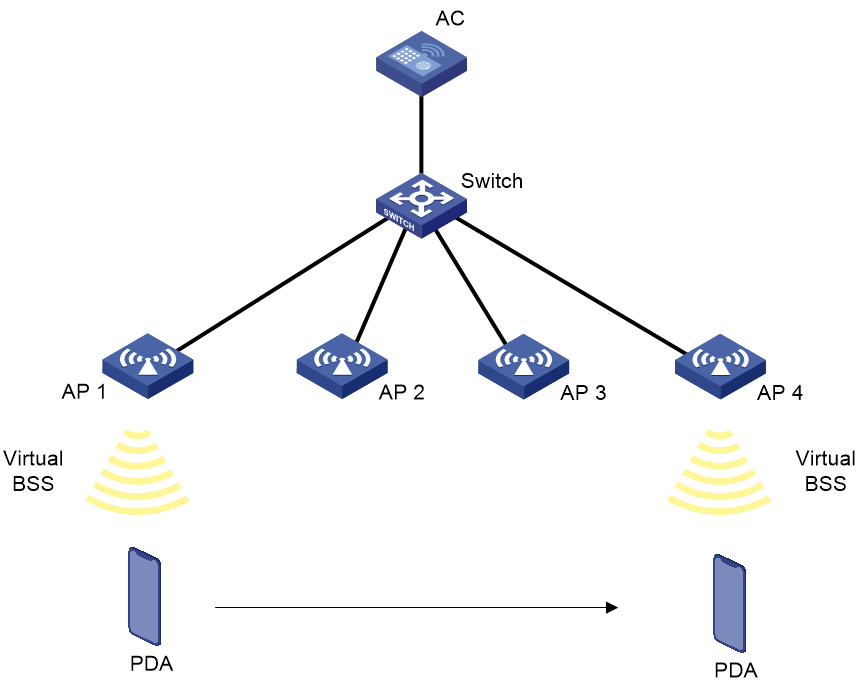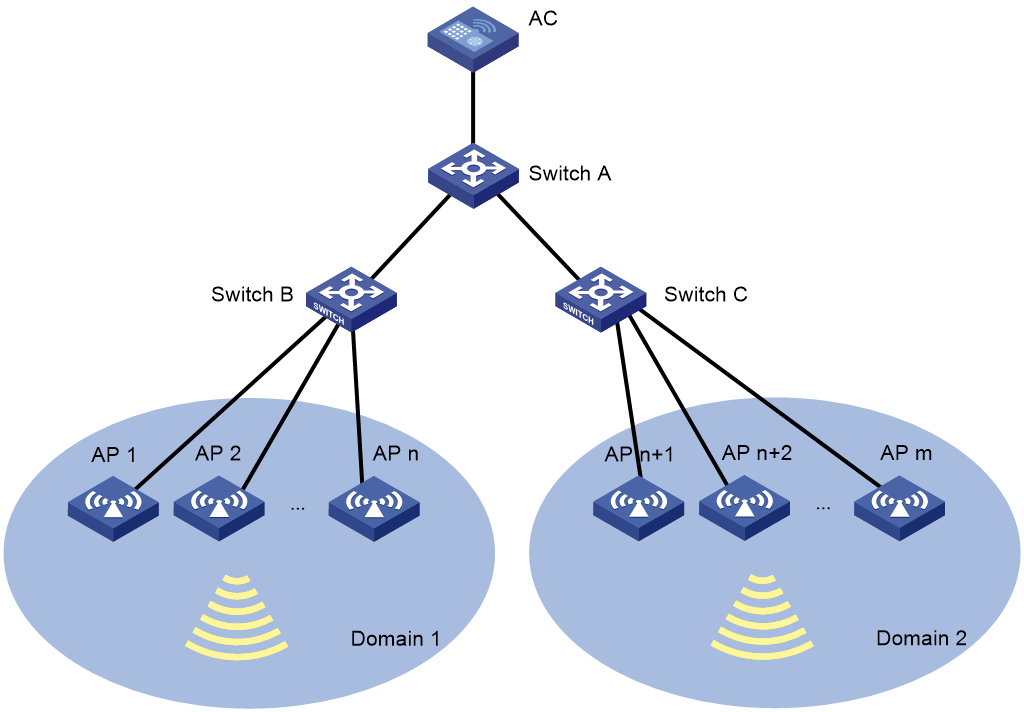- Released At: 19-12-2020
- Page Views:
- Downloads:
- Table of Contents
- Related Documents
-
|
|
|
WLAN Seamless Roaming |
|
Technology White Paper |
|
|
|
|
Copyright © 2020 New H3C Technologies Co., Ltd. All rights reserved.
No part of this manual may be reproduced or transmitted in any form or by any means without prior written consent of New H3C Technologies Co., Ltd.
Except for the trademarks of New H3C Technologies Co., Ltd., any trademarks that may be mentioned in this document are the property of their respective owners.
The information in this document is subject to change without notice.
Contents
Seamless roaming implementation
Small-sized network application
Large-sized network application
Overview
Technical background
Roaming is the process by which a client goes offline from one AP and then comes online from another AP that provides the same SSID.
As shown in Figure 1, the client roams from AP 1 to AP 2. During the roaming process, the client cannot access the network until it comes online from AP 2 successfully, and service interruption occurs.
To avoid service interruption, seamless roaming is introduced.
Figure 1 Client roaming process
Benefits
Seamless roaming provides the following benefits:
· Ensured service continuity—Enables clients to roaming between APs without service interruption.
· Automatic switch to a higher-quality link—Enables the AC to monitor client RSSI and switch to a new AP if the new AP provides higher-quality services.
Seamless roaming implementation
This section describes how seamless roaming works.
Concepts
· Virtual BSS—A BSS assigned by the AC to a specific client. A virtual BSS can be used only by one client for WLAN access.
· Seamless roaming domain—Wireless coverage of APs that provide seamless roaming. These APs must be managed by the same AC and are always grouped by physical location, floor or building for example.
Mechanism
Seamless roaming enables multiple APs (managed by the same AC) in a seamless roaming domain to provide the same virtual BSS for a client. This avoids service interruption when the client roams between the APs. When a client comes online from one AP, the other APs monitor the RSSI of the client. The AC assigns a new AP to the client when the AC detects that the new AP can provide higher-quality services.
As shown in Figure 2, the client roams from AP 1 to AP 2. The link switch process is transparent to the client.
Client association
As shown in Figure 3, in seamless roaming, a client comes online as follows:
1. The AC generates a virtual BSS (virtual BSS 1 in this example) for AP 1 to broadcast beacon frames.
2. AP 1 broadcasts beacon frames that contain the virtual BSS information, or responds to the probe request received from the client.
3. The client attempts to come online from AP 1 and exchanges authentication and association packets.
4. After the client comes online successfully, the AC synchronizes the virtual BSS to AP 2.
5. AP 2 collects information about the client and reports client information to the AC.
Link switching
As shown in Figure 4, the AC switches wireless services to an AP that can provide higher-quality services as follows:
1. The AC notifies AP 2 to provide wireless services to the client when the following conditions are met:
¡ The RSSI of the client frames received by AP 2 reaches or exceeds the specified RSSI threshold.
¡ The gap between the RSSIs of the client frames that AP 2 and AP 1 have received reaches or exceeds the RSSI gap threshold.
2. AP 1 stops providing wireless services to the client and starts to collect client information.
3. The AC notifies AP 2 to provide wireless services to the client.
4. Upon receiving the notification, AP 2 broadcasts beacon frames that contain the virtual BSS information (virtual BSS 1 in this example) and starts to provide wireless services to the client.
|
|
NOTE: The RSSI threshold and RSSI gap threshold can be modified as needed. |
Application scenarios
Small-sized network application
In a small-sized network, such as a small- to medium-sized hospital, you do not need to divide the network into seamless roaming domains because of limited devices. All APs are connected to the AC through a switch. As shown in Figure 5, enable all APs to provide seamless roaming.
Figure 5 Seamless roaming in a small-sized network
Large-sized network application
In a large-sized network, such as a large-sized hospital, you can divide the network into multiple seamless roaming domains to reduce APs' workloads. APs in a seamless roaming domain collect information only about clients in the domain.
As shown in Figure 6, the whole network is divided into two seamless roaming domains. Clients can perform seamless roaming within each seamless roaming domain, and common roaming between different seamless roaming domains.
Figure 6 Seamless roaming in a large-sized network







